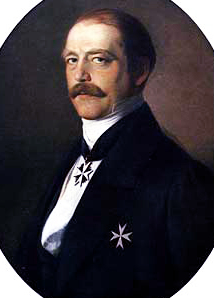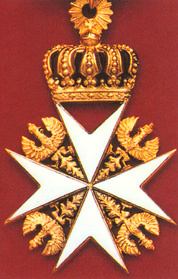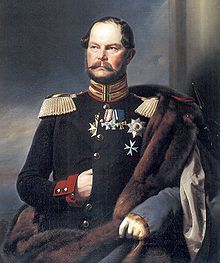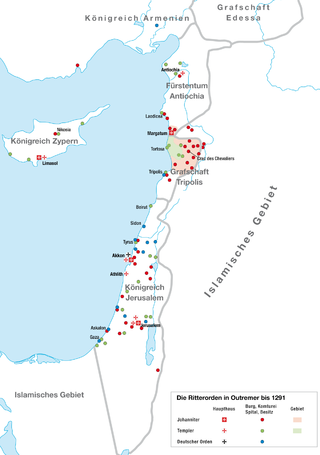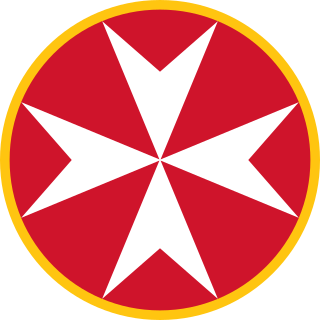| Order of Saint John (Bailiwick of Brandenburg) | |
|---|---|
 Flag of the Order | |
| Type | Order of chivalry |
| Established | c. 1099; dissolved/ suspended 1812; restored 1852 |
| Religious affiliation | Protestant Christianity |
| Ribbon | Black moiré |
| Herrenmeister | Prince Oscar of Prussia |
| Classes |
|
| Ribbon bar of the Order | |
The Bailiwick of Brandenburg of the Chivalric Order of Saint John of the Hospital at Jerusalem (German : Balley Brandenburg des Ritterlichen Ordens Sankt Johannis vom Spital zu Jerusalem), commonly known as the Order of Saint John or the Johanniter Order (German: Johanniterorden), is the German Protestant branch of the Knights Hospitaller, the oldest surviving chivalric order, which generally is considered to have been founded at Jerusalem in 1099.
Contents
- History
- Appearance in German-speaking lands
- Early modern Europe
- The nineteenth century and thereafter
- Organisation
- Ranks
- Charitable works
- Insignia
- Related orders
- Order of Saint John in the Netherlands
- Order of Saint John in Sweden
- Herrenmeister
- Notable members
- Commanders
- Knights of Justice
- Knights of Honour
- Honorary Members
- See also
- References
- Bibliography
- External links
The Order is led by its thirty-seventh Herrenmeister ("Master of the Knights" or Grand Master), Oskar Prince of Prussia. Each of its knights, about four thousand men worldwide, is either a Knight of Justice (Rechtsritter) or a Knight of Honour (Ehrenritter). [1] Membership in the Order is by appointment only, and individuals may not petition for admission; it is not limited to German citizens or German speakers, and knights include citizens and residents of numerous countries. Although membership is no longer limited to the nobility, as it was until 1948, the majority of knights still are drawn from this class. [2] The Order comprises seventeen commanderies in Germany, one each in Austria, Finland, France, Hungary, and Switzerland, and a global commandery with subcommanderies in twelve other countries (Australia, Belgium, Canada, Colombia, Denmark, Italy, Namibia, Poland, South Africa, the United Kingdom, the United States, and Venezuela). [3]
Together with the London-based Most Venerable Order of the Hospital of Saint John of Jerusalem (of which the British monarch is Sovereign Head), the Swedish Johanniterorden i Sverige, and the Dutch Johanniter Orde in Nederland, the Order is a member of the Alliance of the Orders of Saint John of Jerusalem. Along with the Roman Catholic Sovereign Military Order of Malta (SMOM), these four "Alliance Orders" represent the legitimate heirs of the Knights Hospitaller. They consider other orders using the name of Saint John to be merely imitative, and the Alliance and the SMOM jointly formed a False Orders Committee (renamed and reorganised as the Committee on Orders of Saint John), with representatives of each of the five orders, to expose and take action against such imitations. [4]
The Order and its affiliate orders in the Netherlands and Sweden, which became independent of the Bailiwick of Brandenburg in 1946, after the Second World War, are Protestant. The SMOM, headquartered in Rome, admits only men and women of the Catholic faith. [5] The Venerable Order of Saint John, a recreation of the medieval English Langue of the Order of Saint John, was chiefly Anglican at its formation in the nineteenth century but since has opened its membership to men and women of any faith. [6]


